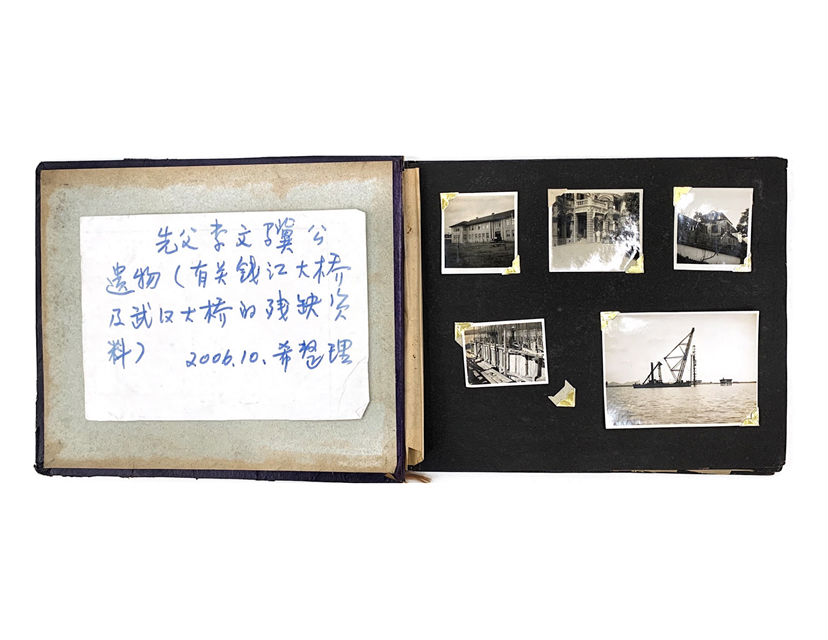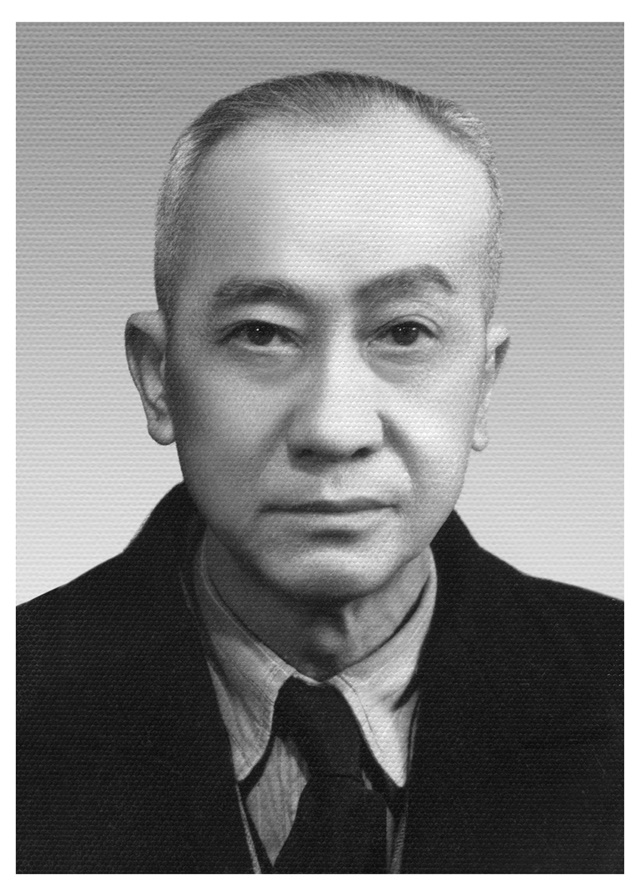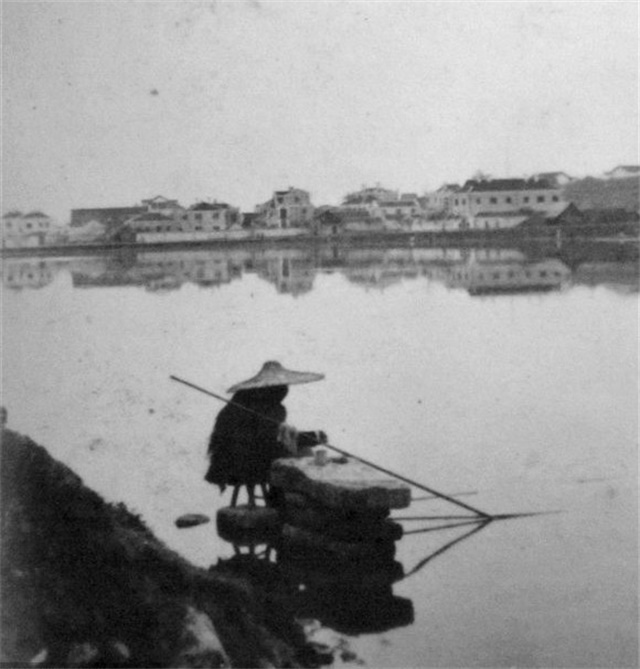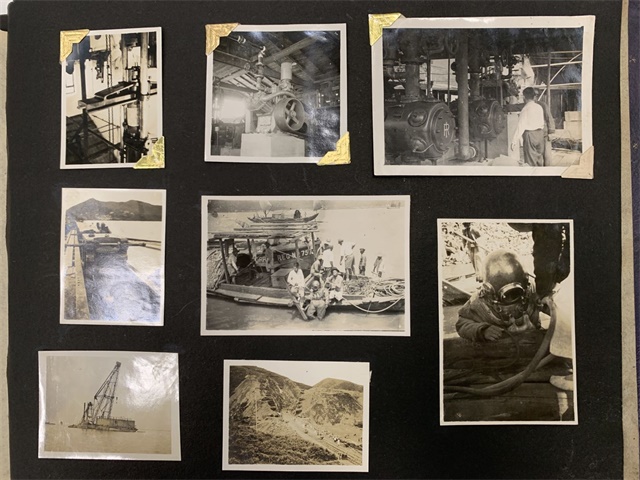
The Qiantang River Bridge in Hangzhou, with a history of more than 80 years, is a typical steel structure bridge which occupies an important position in China’s modern bridge history. This project not only provides important support for local traffic development and economic prosperity, but has trained a group of bridge engineers for the country and accumulated valuable experience for bridge construction. During 1934-1937 when the bridge was built, Mr. Li Wenji, a pioneer of bridges in China, participated in the construction of the bridge as an engineer sent by the Ministry of Railways at that time, and left many precious photos of the project for the world through his camera. Thanks to the unselfish generosity of Mr. Li's descendants, the Steel Structure Museum has collected some of them.

Photos of the Qiantang River Bridge Project Collected by the Museum
Mr. Li Wenji, also named Li Zhongfu, was born in a teaching family in Zhong Village, Panyu County, Guangdong Province in 1886. Li studied both old and new knowledge when he was young, and was particularly interested in arithmetic. In 1905, he was admitted to the preparatory course of Jingshi Teaching School (renamed as National Peking University in 1912). After graduation, he was selected into the Department of Civil Engineering for further study. He was among the first generation senior civil engineering professionals trained by Chinese universities. During this period, he went to Hankou with German bridge expert Prof. Miller for site selection and survey of the Yangtze River Bridge. After graduating from college, he served the railway system for years and went to Hubei, Guangdong, Jiangsu, Fujian, etc. In 1928, he assisted American bridge expert Mr. Walter in re-inspecting the construction of Wuhan Yangtze River Bridge. When the construction of the Qiantang River Bridge started in 1934, Li Wenji was posted by the Ministry of Railways to Hangzhou to participate in the engineering design and construction. Giving full play to his expertise, he recorded the whole process of the construction of the bridge with his camera, leaving precious materials including more than 5,000 photos and over 2,500-meter-long images. After the breakout of Anti-Japanese War and fall of Hangzhou in 1937, he went to Guangzhou to take charge of the bridge rescue of Guangzhou-Wuchang and Guangzhou-Kowloon railways. Later, as the War expanded, he retreated to Hengyang in Hunan Province and Guilin in Guangxi Province. After the victory of the War in 1945, he was appointed as the director and engineer of Qiantang River Bridge Management Office, responsible for the repair of the bridge. In 1949, Li Wenji drafted up the Proposal for the Construction of Wuhan Memorial Bridge and submitted it to the Central Party Committee. Reviewing his several experiences in the construction of the Wuhan Yangtze River Bridge, Li expressed his strong desire to join in the construction of the bridge. Shortly after the founding of the PRC, he was transferred to Beijing and became a member of the Bridge Committee of the Ministry of Railways, joining the construction team of the Wuhan Yangtze River Bridge once again with enthusiasm. Sadly, Li died of uremia in 1951 at the age of 65, failing to witness the completion of the Wuhan Yangtze River Bridge.

Portrait of Mr. Li Wenji
Back to the Peking University periond, Li Wenji had showed his special interest in photography. Some of the photos that he took left precious historical testimony about that era. After the construction of the Qiantang River Bridge started, it was hard to hire a photographer to follow up the whole process because of the project’s long duration and the complexity of work. For this reason, Li Wenji took on the task of photography. Even when he was forced to go about in the country during the War, he still kept recording the life scenes and carefully preserved the photos that he had taken before.

The Nanhu Lake in Yichang Taken by Li Wenji in 1920s
Ranging in size from 4×6 cm to 9×12 cm, the photos collected by the Steel Structure Museum can be categorized into several groups. The first group is on the project itself, which is also the largest in number, covering the construction scenes such as survey, piling, caisson, pouring, erection, floating, track laying, steel beam fabrication and assembly. The second group is on landscape, which shows the social and geographical features of the place where the bridge project was located at the time and the circumstances where the engineers lived and worked. The third group is on people, including the scenes of workers posing during breaks, as well as the commemorative pictures of managers and the project site.

Some Photos of the Qiantang River Bridge Project
With extraordinary historical value, the photos taken by Mr. Li Wenji have left us precious memories about the Qiantang River Bridge Project. According to relevant articles, the original film and photos taken by Li Wenji about the Qiantang River Bridge Project are preserved in the Archives Room of Shanghai Railway Bureau, and the 60-minute video reproduced by the film has become the masterpiece of the Qiantang River Bridge Museum. It is worth mentioning that Mr. Li Wenji overcame all kinds of difficulties and left such precious video materials for future generations in an era when photography technology was underdeveloped, the country and its people were in deep distress, which is really admirable.
Literature:
[1] Chen Nanping. I am from the Second Generation of Bridge Builders! — An Interview with Li Xi, Daughter of Li Wenji, a Building Engineer of the Qiantang River Bridge [J]. Traffic Construction and Management, 2012(09):50-51.
[2] Chen Cilin. Li Wenji - Recorder of the Qiantang River Bridge [N]. People's Railway News, 20120116:B4.
[3] Li Mengxin. Footprints of Celebrities in Wuhan · Economy Volume [M]. Wuhan: Wuhan Press.2014.
[4] Yang Yongqi. The film from more than 80 years ago brings you through the whole construction process of the Qiantang River Bridge.
[J]. Hangzhou (Weekly), 2019, 000(023):48-51.
(Some pictures are from the Internet. Please contact the Steel Structure Museum if there are questions.)